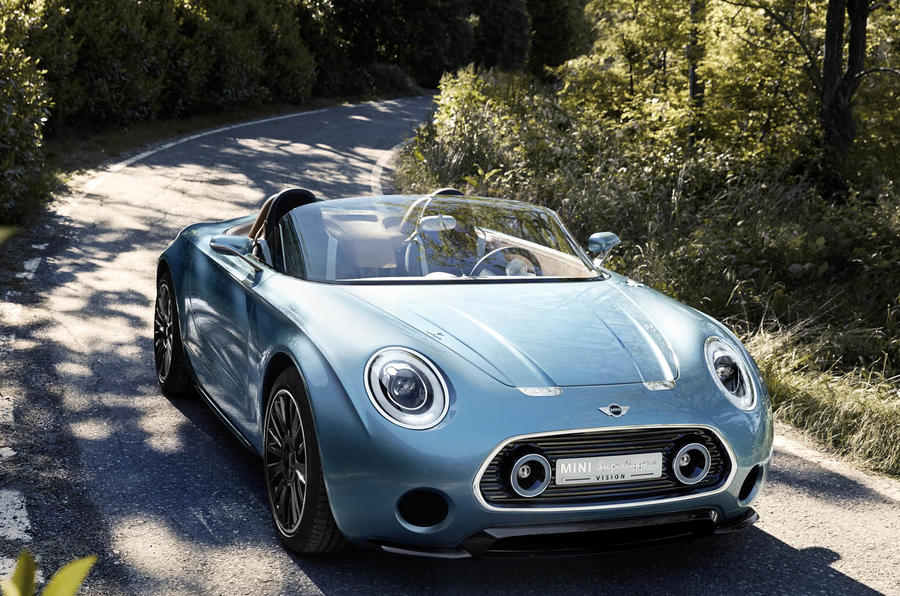Adapt or die. It’s an cliché, but no less true for that, and it applies to car brands just as much as it does animals, humans or plants.
And BMW has decided that the moment has come for Mini to adapt. The first physical signs of this metamorphosis appeared last week in Italy at the Villa D’Este Concours D’Elegance, with the unveiling of the Mini Touring Superleggera, an Italian coachbuilt roadster that sits on an electric-powered, carbonfibre platform that almost certainly owes plenty to BMW’s i car programme.
Though it wears the familiar grille, stares at you through a Mini’s round headlights and flaunts a pair of jaunty spotlamps, it’s clear that this is a different kind of Mini. The slightly barrel-chested body section has gone, to be replaced by subtly concave flanks crested by a strong horizontal crease.
The Superleggera’s tail tapers in a way that no Mini’s has before - not least because the Mini has never really had a tail, unless it’s a coupé, roadster or an ancient Wolseley Hornet - and it’s abruptly cut rear end, complete with Union Flag taillights, is a novelty too.
Now this is a Mini that’s the work of Carrozzeria Touring Superleggera and their design chief Louis de Fabribeckers, but the car was built in league with Mini in Munich, which orchestrated its creation and must be totally aware of the message that it sends. Mini design boss Anders Warming was keen to create "a very modern, beautiful-looking roadster of simple form language" and free of the unnecessary fussiness that scars so many moderns.
The result is a 21st century take on your classical roadster, and something fresh for Mini. Although it is, in fact, more Mini-like than it first appears. Its wheels are pushed towards the corners. It has a chrome waist-rail, just like every Mini post-2001, and the Wolseley Hornet and Riley Elf besides. And its fabulous, hand-beaten, brushed aluminium dashboard houses an instrument display deliberately referencing the three-dial instrument pack of the earliest Mini Super De Luxe.
It’s too wide, as BMW design boss Adrian van Hooydonk admits, and therefore not very Mini-like in its scale, and rear-wheel drive too, which is decidedly un-Mini-like. But van Hooydonk says that what he’d like to see is a hybrid drivetrain, propelling all four wheels. Peter Schwarzenbauer, BMW’s board member for Mini, talks of a production version of this car costing around £30,000, although the company is some way from confirming the programme. It’s likely to experiment with many more sculptural flavours before committing to extensions of the Mini’s design palette.






Join the debate
Add your comment
MINI: BUILD THIS CAR
If not a spiritual successor, then a distant cousin inheriting the title of lightweight British sportscar from the MGB. Make a long-tail hardtop from it and you have a MINI F-Type. Where do I sign?
I like it
The life of Riley.